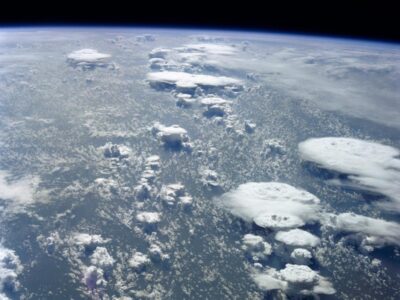Global Impacts of ENSO Reach into the Stratosphere
(from Earth and Space News)
El Niño events have significant global impacts on weather and climate, but these reach up into the stratosphere, beyond the troposphere where most of Earth’s weather takes place.

El Niño–Southern Oscillation (ENSO), the atmosphere–ocean coupled phenomenon associated with multi-year variations in the sea surface temperatures in the tropical Pacific, can lead to extreme changes in weather around the globe through so-called teleconnections.
ENSO teleconnections extend into the stratosphere, the layer of the atmosphere above the troposphere where most of Earth’s weather takes place. Variability in the stratosphere can also influence surface weather, both in the tropics and in the polar and midlatitude regions.
A recent paper in Reviews of Geophysics describes the observational and modeling work over recent decades that has increased our knowledge about how ENSO alters the conditions in the stratosphere from the tropics to both poles. Here, the authors of the paper give an overview of our understanding and outline the research challenges that remain.
How do El Niño events affect the stratosphere?
During the warm phase of El Niño, increased atmospheric convection in the tropical Central Pacific drives large-scale atmospheric waves that influence weather far from from the tropics. These waves can amplify vertically into the stratosphere, which strengthens the equator-to-pole circulation in the stratosphere (the Brewer-Dobson circulation), enhancing the upward motion in the tropics and downward motion at the poles in the stratosphere. This circulation change is associated with a cooling of the tropical lower stratosphere, and a warming of the polar regions in both hemispheres. The anomalous wave propagation also weakens the stratospheric polar vortex, leading to a higher probability of so-called sudden stratospheric warming events, which can induce cold air outbreaks over Europe.
The changes in tropical heating and convection also influence the tropical stratosphere. In the lower tropical stratosphere, a cooling is observed along with a decrease in ozone during El Niño, with strong zonal asymmetries, especially in the lowermost stratosphere. The wind anomalies associated with the tropical stratospheric Quasi-Biennial Oscillation (QBO) tend to propagate downward faster during El Niño than during La Niña.

During La Niña events, the opposite stratospheric response is observed in most regions, but the response is not symmetric between El Niño and La Niña for all observed impacts and regions. For example, the observed frequency of Arctic sudden stratospheric warmings is similar for El Niño and La Niña winters rather than being opposite.
Even in regions where the opposite response is observed, La Niña and El Niño events of a similar strength (as measured by the magnitude of the sea surface temperature anomalies in the tropical Pacific) do not necessarily produce teleconnections of equal magnitude for both the troposphere and the stratosphere.
It is not clear whether some of these observed differences in La Niña and El Niño teleconnections arise from the asymmetric forcing in the tropical Pacific, or if they reflect internal atmospheric variability affecting the teleconnections.
.jpg)



1 comment:
EL NINO LA NINA always fascinates me, this read being no exception- Hardly could digest everything as terms used here for me are difficult to understand.
Post a Comment